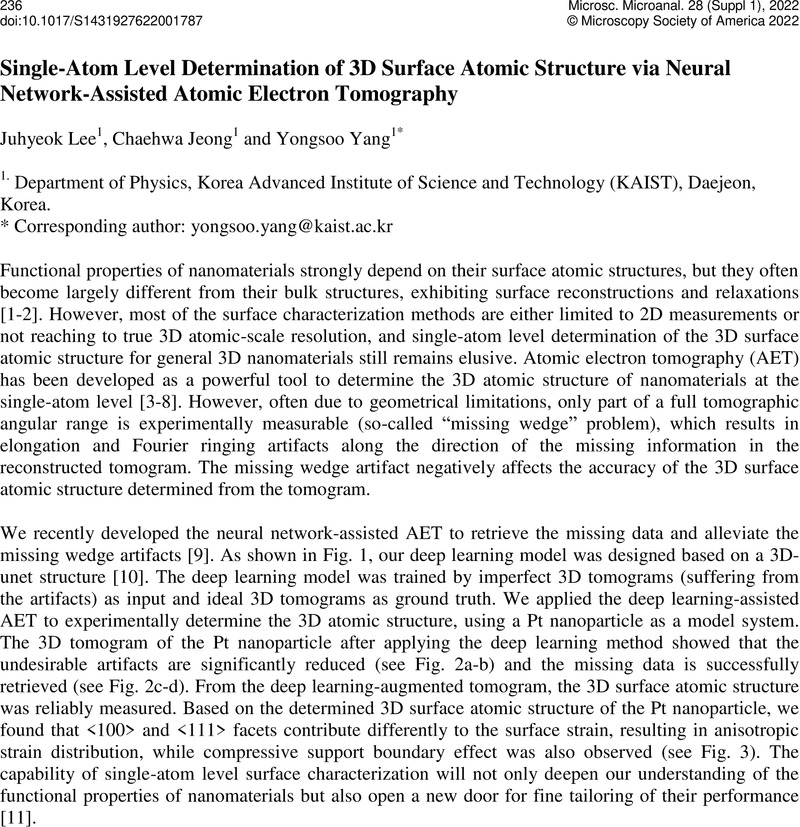No CrossRef data available.
Article contents
Single-Atom Level Determination of 3D Surface Atomic Structure via Neural Network-Assisted Atomic Electron Tomography
Published online by Cambridge University Press: 22 July 2022
Abstract
An abstract is not available for this content so a preview has been provided. As you have access to this content, a full PDF is available via the ‘Save PDF’ action button.

- Type
- Advanced 3D Imaging and Analysis Methods for New Opportunities in Material Science
- Information
- Copyright
- Copyright © Microscopy Society of America 2022
References
Çiçek, Ö. et al. , Medical Image Computing and Computer-Assisted Intervention (2016), p. 424-432.Google Scholar
We thank Chang Yun Son and Aloysius Soon for helpful discussions. This research was supported by the National Research Foundation of Korea (NRF) Grants funded by the Korean Government (MSIT) (Nos. 2019R1F1A1058236 and 2020R1C1C100623911). J.L. and C.J. were also partially supported by the KAIST-funded Global Singularity Research Program (M3I3) for 2019, 2020, and 2021. The STEM experiment was conducted using a double Cs corrected Titan cubed G2 60-300 (FEI) equipment at KAIST Analysis Center for Research Advancement (KARA). Excellent support by Hyung Bin Bae, Jin-Seok Choi, and the staff of KARA is gratefully acknowledged.Google Scholar



